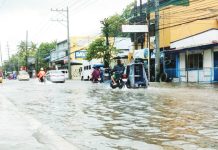
THE DEPARTMENT of Labor and Employment (DOLE) in Western Visayas recently bared an encouraging statistic: zero major workplace accidents as of March 2025, as reported by this paper.
On the surface, this appears to be a triumph for labor rights and occupational safety enforcement. But the absence of reported incidents does not necessarily mean the region’s workers are truly safe. In fact, it may be masking a deeper, more systemic problem — one of underreporting, low compliance, and lingering gaps in workplace safety culture.
According to DOLE Region 6’s own data, the initial compliance rate among inspected establishments is only 61.71%, a figure that improved to 68.67% after follow-ups. While this shows incremental progress, it also means that roughly three out of 10 workplaces in the region still fall short of required safety and health standards under Republic Act 11058 and DOLE Department Order No. 198-18. That is a significant concern. In any other field, a 30% non-compliance rate would not be seen as acceptable — especially when workers’ lives and livelihoods are at stake.
More troubling is the implication that the zero-accident figure could be the result not just of effective safety protocols, but of insufficient reporting. DOLE officials themselves admit that most complaints received are wage-related, and that even minor injuries such as papercuts — while work-related — are often overlooked or go unreported. If even small incidents are slipping through the cracks, what more of injuries that never reach regulatory agencies due to fear of reprisal, lack of awareness, or bureaucratic hurdles?
This raises a question: Are employers doing enough to create a culture of transparency and safety where workers feel empowered to report hazards and incidents? The responsibility does not lie solely with the workers to speak up — it is also the duty of companies to build environments where health and safety are proactively managed, not just reactively addressed after a complaint or inspection.
Moreover, the approach to safety enforcement must evolve. Relying primarily on routine or complaint-driven inspections risks allowing violations to persist in less visible or unmonitored workplaces. With issues like heat stress becoming more common due to climate change, and the rise of informal or subcontracted labor, the region needs a more robust, preventive strategy. This includes empowering barangay-level safety watchdogs, subsidizing training for safety officers in small enterprises, and improving public awareness about the rights and entitlements of workers under existing laws.
Western Visayas cannot afford to be lulled into complacency by zero-accident headlines. The true measure of workplace safety is not the absence of reports, but the presence of a strong, enforced culture of prevention, transparency, and continuous improvement.
Until every workplace can meet that standard, we must keep asking: Are we really safe?







